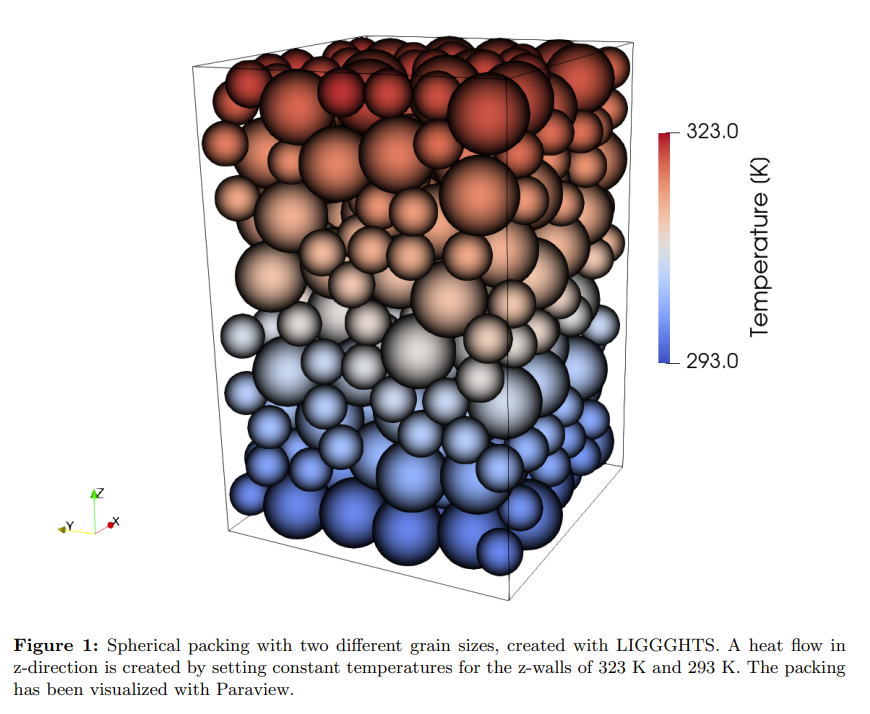Thermal Conductivity of Granular Media and its Dependence on Volume Filling Factor
- IGEP, TU Braunschweig, Germany
Introduction
To accurately describe the variable surface and subsurface temperatures of regolithcovered small Solar System bodies, thermal models describing the heat transport in granular media need to be applied. The thermal models require as an input parameter the thermal conductivity of the granular material, but this property has yet to accurately be derived for arbitrary volume filling factors. With simulations of packings of spheres, we examine the relation between volume filling factor and thermal conductivity.
Thermal conductivity
Our work is based on the thermal conductivity model of sphere packings derived by Chan and Tien (1973) with augmentations for cohesive particles by Gundlach & Blum (2012). Input parameters for the analytical approximation of the thermal conductivity are the particle radius, the local temperature, and the local volume filling factor, the thermal conductivity of the solid grain material, the specific surface energy and the Young’s modulus of the grain material as well as an empirical factor describing the details of the packing structure. However, the latter is quite uncertain, because this factor depends on the details of the generation, homogeneity and isotropy of the sphere packing. For a broad application of the thermal conductivity model that allows for a wide range of (local) volume filling factors and different packing morphologies, we conduct a series of numerical simulations and derive their heat conductivities. We also examine packings with identical porosities but different packing structures to assess more subtle influences on the heat conductivity.
Heat Transfer in LIGGGHTS
With the open-source discrete-element particle-simulation software LIGGGHTS, which is optimized for general granular and granular heat-transfer simulations, packings of spherical grains and their physical properties can be simulated and analyzed. To determine the thermal conductivity of such a packing, we sandwich the spheres between two simulated mesh walls of different temperatures T1 and T2 and distance L. After sufficient time steps, the constant heat flux through a unit area of the packing can be derived through
with λ being the heat conductivity of the granular packing. All other particle properties that determine, e.g., the contact radius between the spheres and the flow of heat among them, are set within the simulation. With this method, the thermal conductivity of any box-shaped or cylindric spherical package can be determined, making it possible to investigate the changes in thermal conductivities with changing volume filling factors.

Perspectives
An improved understanding of heat flow through granular packings will lead to better thermal models for the sub-surface of small bodies in the Solar System. With accurate knowledge of their thermal conductivity, we will get a better insight into their heat distribution and temperature evolution, the evaporation rates of volatiles in comets, and overall a better idea of the thermal evolution of young planetesimals regarding sintering and melting.
References
Gundlach & Blum (2012), Icarus, 219, 2
Chan & Tien (1973), J. Heat Transfer, 95, 302-308
How to cite: Lammers, K., Gundlach, B., and Blum, J.: Thermal Conductivity of Granular Media and its Dependence on Volume Filling Factor, Europlanet Science Congress 2022, Granada, Spain, 18–23 Sep 2022, EPSC2022-376, https://doi.org/10.5194/epsc2022-376, 2022.

